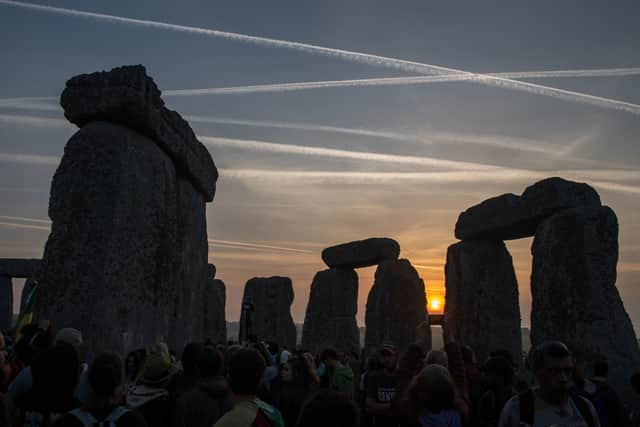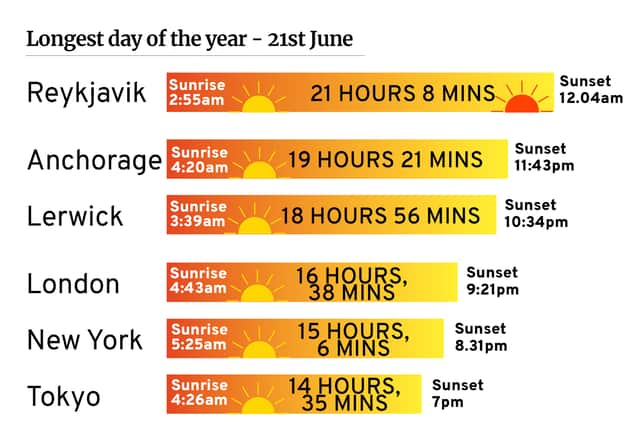How long is the longest day of the year 2023? UK Summer Solstice daylight hours - when is sunrise and sunset
and live on Freeview channel 276
The nights are on the turn, with summer officially being marked tomorrow by the summer solstice. Also known as the longest day of the year, the 21 June will see the UK enjoy the longest hours of sunlight in the yearly calendar.
The summer solstice paves the way for brighter evenings and warmer weather, which the UK has definitely been seeing in recent days, with the first heatwave of the season. However, the amount of daylight you experience, will depend on where in the UK you are located, with areas further north seeing a longer stretch in the evenings.
Advertisement
Hide AdAdvertisement
Hide AdHere’s everything you need to know about the longest day of the year and when you can expect the sun to rise and set in your area.
When is the longest day of the year?
The summer solstice marks the longest day of the year which falls on 21 June. On the summer solstice, the North Pole is tilted closer towards the sun than any other time in the yearly calendar. This means that the Northern Hemisphere receives more sunlight during that particular day.


The closer you are to the North Pole, the longer your day of sunlight will be. Countries like Iceland can experience up to 21 hours of sunshine on 21 June, with others like Tokyo enjoying 14 hours of daylight. The summer solstice is only the longest day of the year in the Northern Hemisphere, with the date 21 June actually being the shortest day in the Southern Hemisphere.
How long is the longest day of the year?
The length of the longest day of the year varies country by country. How many hours of sunlight you get during the summer solstice will depend on how close you are to the North Pole. Places in the Northern Hemisphere like Alaska can expect to see up to 19 hours of sunlight on 21 June.
Advertisement
Hide AdAdvertisement
Hide AdWhereas in the UK, the average hours of sunlight we can expect to see is around 16. However, in the Shetland Islands, which are located off the coast of Northern Scotland, residents can expect to enjoy over 19 hours of daylight.


When does the sun rise and set in the UK on the summer solstice?
The amount of daylight you will experience will vary throughout the UK, depending on where you live and how close your location is to the North Pole.
Areas like Northern Ireland and Scotland will experience longer daylight than the south of England or Channel Islands. Popular spots in the UK to celebrate the summer solstice include Stonehenge, Glastonbury Tor, Ben Nevis, Bryn Celli Ddu, Gwynedd and the Giant’s Ring. Here are some of the sunrise and sunset times across UK for summer solstice 2023:
Comment Guidelines
National World encourages reader discussion on our stories. User feedback, insights and back-and-forth exchanges add a rich layer of context to reporting. Please review our Community Guidelines before commenting.
